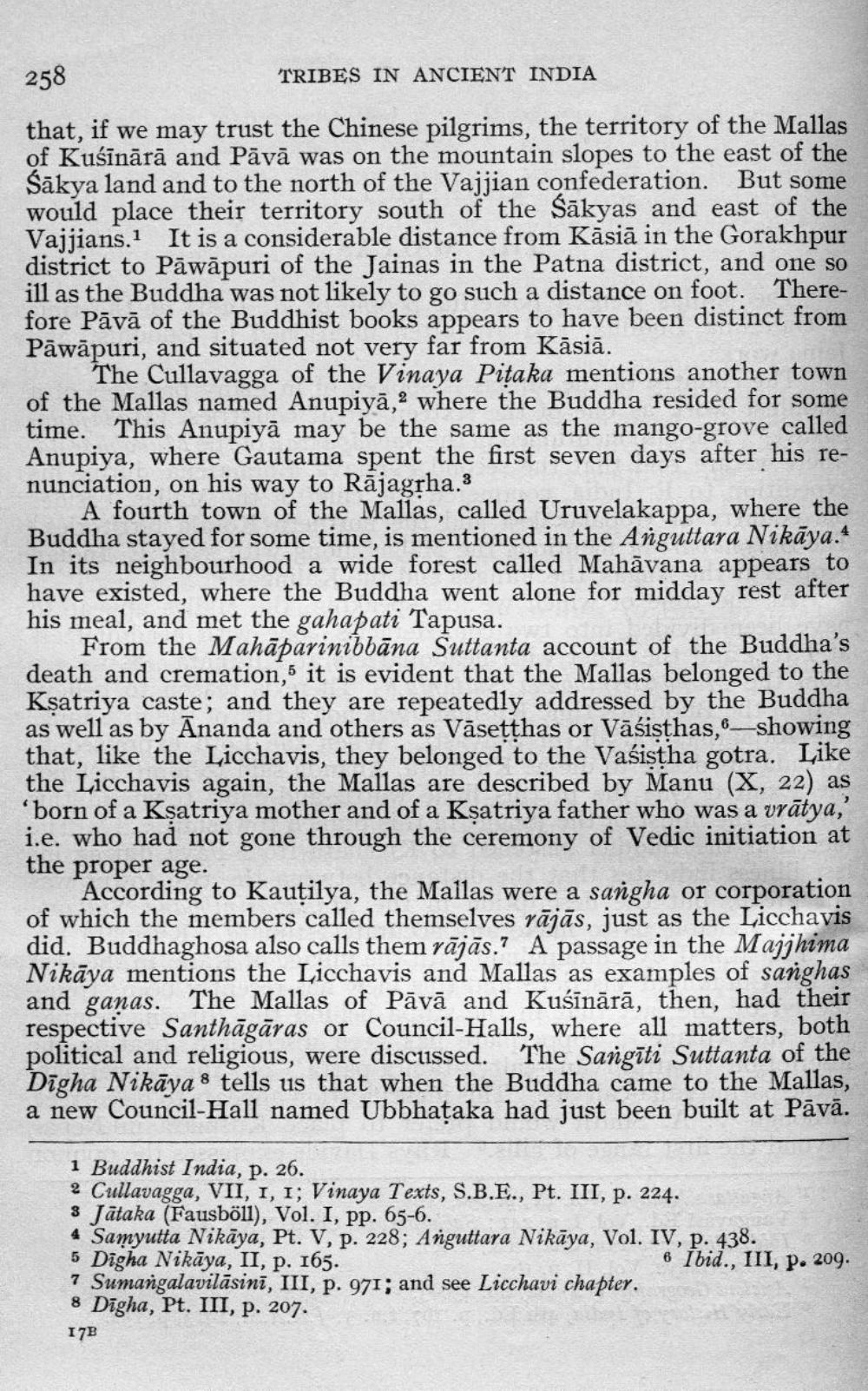________________
258
that, if we may trust the Chinese pilgrims, the territory of the Mallas of Kuśīnārā and Pāvā was on the mountain slopes to the east of the Sakya land and to the north of the Vajjian confederation. But some would place their territory south of the Sakyas and east of the Vajjians. It is a considerable distance from Kasia in the Gorakhpur district to Pāwāpuri of the Jainas in the Patna district, and one so ill as the Buddha was not likely to go such a distance on foot. Therefore Pāvā of the Buddhist books appears to have been distinct from Pawāpuri, and situated not very far from Käsiä.
TRIBES IN ANCIENT INDIA
The Cullavagga of the Vinaya Pitaka mentions another town of the Mallas named Anupiya,2 where the Buddha resided for some time. This Anupiya may be the same as the mango-grove called Anupiya, where Gautama spent the first seven days after his renunciation, on his way to Rajagṛha.3
A fourth town of the Mallas, called Uruvelakappa, where the Buddha stayed for some time, is mentioned in the Anguttara Nikaya.* In its neighbourhood a wide forest called Mahavana appears to have existed, where the Buddha went alone for midday rest after his meal, and met the gahapati Tapusa.
6
From the Mahaparinibbana Suttanta account of the Buddha's death and cremation, it is evident that the Mallas belonged to the Kṣatriya caste; and they are repeatedly addressed by the Buddha as well as by Ananda and others as Vaseṭṭhas or Vasisthas, showing that, like the Licchavis, they belonged to the Vasistha gotra. Like the Licchavis again, the Mallas are described by Manu (X, 22) as 'born of a Kṣatriya mother and of a Kṣatriya father who was a vratya,' i.e. who had not gone through the ceremony of Vedic initiation at the proper age.
According to Kautilya, the Mallas were a sangha or corporation of which the members called themselves rājās, just as the Licchavis did. Buddhaghosa also calls them rājās." A passage in the Majjhima Nikaya mentions the Licchavis and Mallas as examples of sanghas and ganas. The Mallas of Pava and Kuśīnārā, then, had their respective Santhagaras or Council-Halls, where all matters, both political and religious, were discussed. The Sangiti Suttanta of the Digha Nikaya tells us that when the Buddha came to the Mallas, a new Council-Hall named Ubbhaṭaka had just been built at Pāvā.
8
1 Buddhist India, p. 26.
2 Cullavagga, VII, 1, 1; Vinaya Texts, S.B.E., Pt. III, p. 224.
* Jātaka (Fausböll), Vol. I, pp. 65-6.
4 Samyutta Nikaya, Pt. V, p. 228; Anguttara Nikaya, Vol. IV, p. 438.
5 Digha Nikaya, II, p. 165.
7 Sumangalavilasini, III, p. 971; and see Licchavi chapter.
8 Digha, Pt. III, p. 207.
17B
6 Ibid., III, p. 209.




